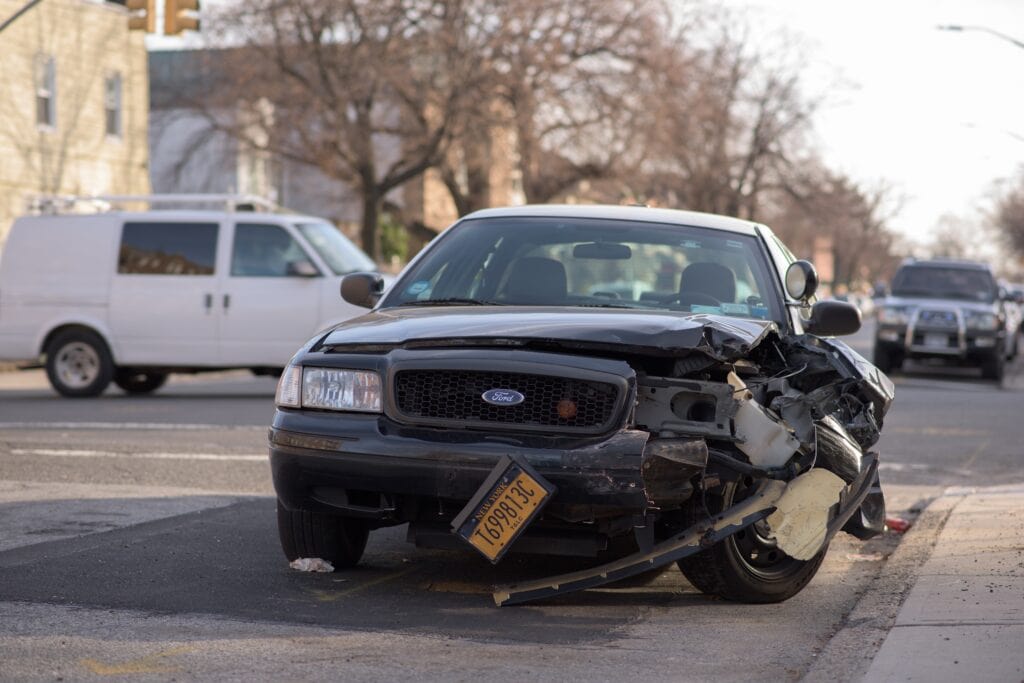Car accidents are an all too common experience, with over 4.2 million passenger vehicle accidents occurring yearly. Knowing what to do after an accident is crucial to remaining calm and composed during these uncertain and scary times. This guide provides a step-by-step roadmap on what to do after a car accident. From the immediate aftermath of the wreck to filing insurance claims, we will help you understand the essential steps to take following an accident.
Immediate Steps to Take at the Scene
If you get into a car accident, follow these steps.
Ensure Safety
Car accidents can be a harrowing and scary experience. The most important action to take in the immediate aftermath is to ensure the safety of everyone involved. If no injuries have occurred, try to move your vehicles off the roadway to avoid further collisions. Use hazard lights to alert other drivers and make your cars more visible. If there are injuries, immediately call 911 for emergency medical assistance. Even if an injury seems minor, it is advisable to receive prompt medical attention because the depth of injuries may not always be apparent. Be sure to keep records of interactions with medical providers and copies of medical bills for future insurance claims.
Contact Law Enforcement & Exchange Information
Regardless of the severity of an accident, it is crucial to involve law enforcement. The responding officers will document the events of the accident and the scene, creating an official police report. This report provides concrete evidence of the events of the accident for your insurance company. Take pictures of the scene, vehicle damage, nearby street signs, and license plate numbers. This documentation is valuable for the claims process.
At this time, you should also exchange information with the other parties involved in the accident. This includes names, phone numbers, insurance information, and vehicle details. Emotions can run high following an accident. However, it is crucial to remain calm and compliant and avoid assigning blame at the scene.
Following these steps at the scene establishes a smoother insurance claims process.
Notify Your Insurance Company
Once you’ve ensured the safety of everyone involved in the accident, contacted law enforcement, and exchanged information at the scene, it is time to start the claims process with your auto insurance company. Most auto policies require prompt reporting, typically within a few days of the incident. Once you’ve contacted your insurance company, you will be assigned a claims number and a claim adjuster. This individual will be your point of contact within your insurance company throughout the claims process.
You must provide accurate and comprehensive information regarding the incident, including the date, time, location, and description. Your insurance provider will likely ask for copies of the filed police report, images, and any communication and treatment you received from a medical professional. Be prepared to answer questions about passengers in your vehicle as well as the circumstances of the accident. Providing this information helps your claims adjuster understand the situation and process your claim efficiently.
You must maintain open and transparent communication with your insurance company throughout the claims process. Clear communication leads to a faster resolution for you and the other parties involved.
Understanding Your Insurance Coverage
Particularly after a car accident, you must understand the specifics of your car insurance policy. Policies vary, so knowing what incidents your insurance covers is essential. Here are the most common types of auto coverage that relate to car accidents:
-
Liability Coverage
This type of insurance covers damages to the other party’s vehicle and medical expenses if you are at fault. This coverage is required in most states.
-
Collision Coverage
Collision coverage helps cover the cost of repairs to your vehicle regardless of fault. This form of coverage likely has a deductible you must pay before coverage kicks in.
-
Medical Payments Coverage
This type of insurance applies to medical expenses for you and your passengers regardless of fault.
With the help of the information and documentation you provide, your insurance company will be able to determine what coverages kick in depending on the specifics of the accident.
Dealing with the Other Party’s Insurance
Throughout this process, you will likely be in contact with the other party’s auto insurance company. In these conversations, avoiding admitting fault or blaming the other party is essential. The insurance companies can decide who is at fault in the accident. Before providing information to the other party’s insurance company, ensure you have consulted your insurance company, as they can help protect your interests during the claims process. Keep a record of all communication with the other party’s insurance company.
Your insurance company and the other party’s insurance company will work together to determine fault and make payouts. If you are at fault, your liability coverage will kick in to cover the other party’s expenses. If the other party is at fault, their liability coverage will provide payments for your vehicle repairs and medical expenses.
Taking these steps right after a car accident ensures a smooth, quick claims process!
Need Some Help?
Need help choosing the right auto policy? Reach out to Masters Insurance today and protect your finances and your vehicle!

